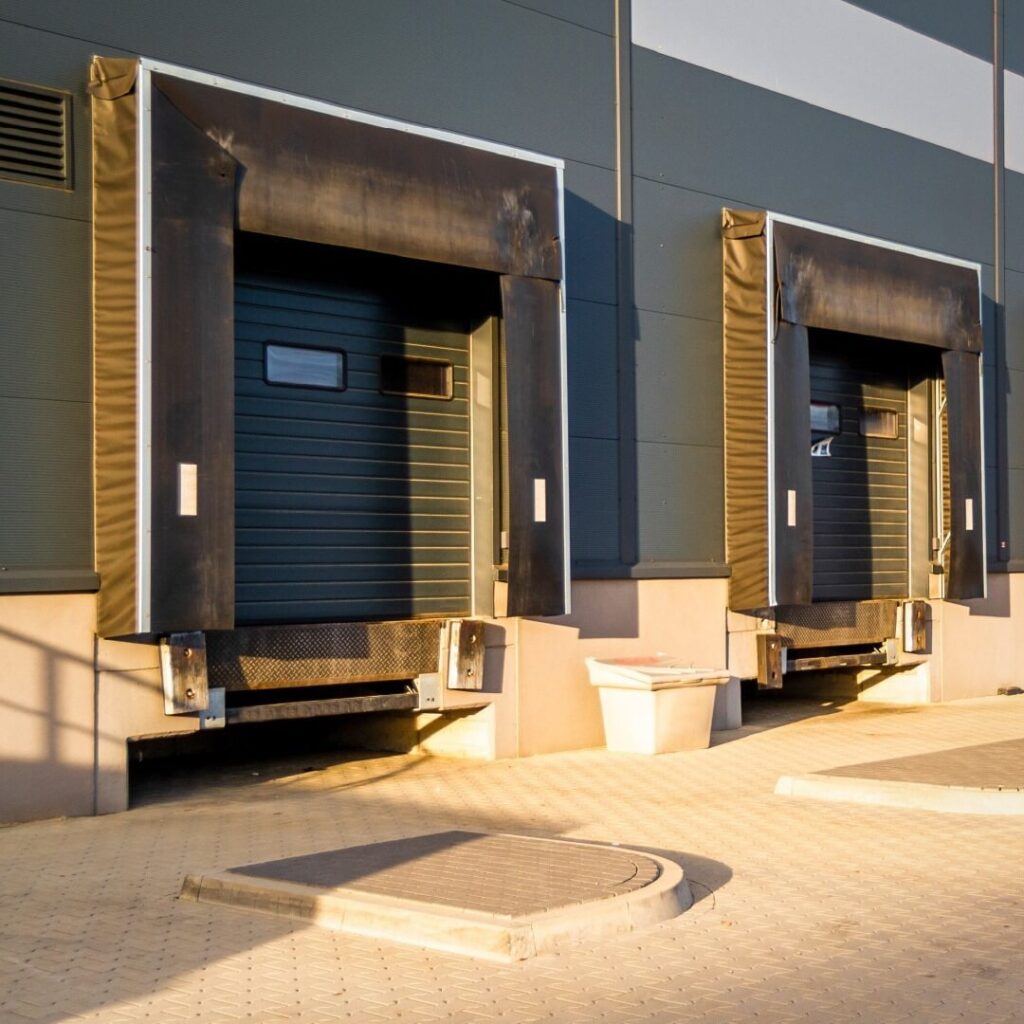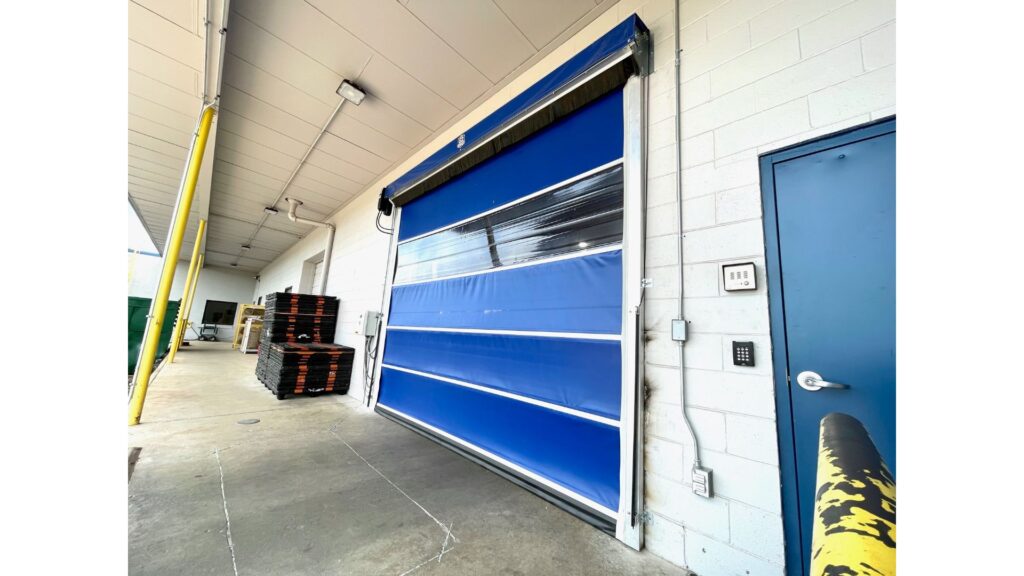Commercial doors are designed to withstand more wear and tear than your average door. But, over time, all doors are bound to break or incur damage with consistent use. There are a few common commercial door repairs you can expect to encounter as your door ages. Luckily, many of them are typical fixes that don’t require any door replacements.
In this post, we’ll cover 10 common commercial door repairs and how to spot them. Keep reading to learn about repairs and fixes!
1. Commercial Door Alignment Issues
Have you ever noticed a draft or light coming from your door? Does your door not shut quite right or stick when you try to open it? If so, your door might be misaligned.
Misalignment often happens after a door or the hinges have been damaged. It can also occur due to the settling of a building or changes in temperature warping the door materials.
How to Spot Door Alignment Issues
Here are the top signs that your door is misaligned:
- Visible gaps around the door frame
- Loose or wobbly hinges
- A sticking door
- The bottom of the door scrapes the floor
- A door that won’t latch
- A consistent draft coming from the door
2. Worn Hinges
Creaking, grinding, or squeaking can all be caused by worn-out door hinges. Hinges can start to corrode, rust, and wear down over time, especially if they are not regularly lubricated.
Worn hinges are common, and they are a relatively easy part to replace. Usually, heavy use and improper lubrication cause hinges to wear down. They can also be affected by temperature and weather.
How to Spot Worn Door Hinges
Here are signs your door hinges are wearing out:
- Squeaking, grinding, or creaking sounds when the door is used
- Visible rust or corrosion on the hinges
- Stiff hinges that are difficult to move
- The door hangs unevenly
- Loose screws or other hardware
3. Faulty Commercial Door Closers
Commercial door closers are the hydraulic or spring-loaded closing mechanisms installed atop many commercial doors to help them swing closed at a certain speed and stay closed. They ensure a door closes smoothly to allow for safe movement through it but firmly enough to ensure the door latches at the end.
Because of their moving parts, door closers wear down over time and require maintenance and periodic adjustments when they operate incorrectly. Incorrect use such as slamming the door can also cause them to malfunction.
How to Spot a Faulty Door Closer
Door closers have a few signs of damage:
- Closing to quickly
- Not closing automatically
- Keeping the door ajar after use
- Not allowing the door to latch
- Slamming
4. Damaged Seals and Weatherstripping
For doors that lead to the outside or require more insulation, weatherstripping and seals are usually a must to help keep your building insulated. In especially hot or cold months, poor seals and weatherstripping can cause your energy bills to go up and make managing the internal temperature of your building difficult.
Seals and weather stripping can wear down with time or from severe weather.
How to Spot Damages Weatherstripping and Seals
Weatherstripping and seals can show a few signs of damage and need for replacement:
- Visible gaps around the door
- Visible wear and tear on the seals
- Higher energy bills
- Difficulty regulating building temperature near the door
- Seals detached from the door
5. Lock and Handle Issues
Locks tend to be a hardier piece of door hardware, but they can break just like any other piece. Usually, when locks on doors break, they pose a security risk to your building and assets inside. Handles can also break from improper use or accidental damage from a hard hit.
Locks and handles break for a variety of reasons, such as break-ins, improper use, or weather issues.
How to Spot Broken Locks and Handles
Locks and handles can show a few signs of damage:
- Difficulty locking or unlocking
- Loose handles
- Inoperable handles or locks
- Difficulty operating the handle
- Sticking or jamming
6. Automatic Door Malfunctions
Automatic doors usually stand up to heavy use and incur issues when not maintained or just with age. As a key tool for keeping your building accessible, having issues with your automatic door can make your entrances more difficult to use.
Automatic doors usually experience issues with their tracks or motors when they start to have problems.
How to Spot Issues with Your Automatic Door
- Failure to open or close correctly
- Jerking while the doors are sliding
- Unpleasant noises
- Sensors not picking up motion/weight
- Opening slowly or not all the way
7. Glass Door Repairs
Common on storefronts, offices, and other front entrances, glass doors are usually quite resistant to damage to withstand heavy use. They can, however, break or chip accidentally or have issues with other parts of their hardware.
Accidental impact and severe weather events are common causes for damage to commercial glass doors.
How to Spot Glass Door Damage
Glass doors usually have a few clear signs of damage:
- Cracks
- Chips
- Scratches
- Damaged hardware (metal frames, handles, etc.)
8. Commercial Door Frame Damage
Door frames can also incur damage over time depending on what they are made of and where they are located. It can be easy to overlook the frame of the door, but damages here can cause issues with the door itself and your building.
Door frames are often damaged by weather, time, frequent use, and machinery and equipment passing through the frame.
How to Spot Door Frame Damage
Signs of door frame damage include:
- Rust
- Corrosion
- Cracks or dents
- Warping
- Rotting wood
- Water damage
9. Threshold and Sweep Repairs
Underneath your door, your sweep and threshold sit helping create a seal. This seal prevents the outside air from entering, protects from weather and pests, and helps insulate your building. Not all doors need thresholds and sweeps, but they are important for many door types.
Door sweeps and thresholds usually wear down with time but can also be damaged by weather.
How to Spot Door Threshold and Sweep Damage
Here are signs your door threshold and sweep are in need of repair:
- Light coming in underneath the door
- Draft
- Scraping or scratching when the door is used
- Lifting of the threshold or sweep from their attached surface
10. Rust, Corrosion, or Rot
Depending on what your doors are made of, they can experience rust, corrosion, or rot from the outside elements. Wooden doors are susceptible to water damage, rot, and pest infestations when they are improperly sealed or not maintained. Metal doors can rust or corrode from water or chemicals, usually when their protective coating or paint wears down.
How to Spot Rust, Corrosion, and Rot on Commercial Doors
- Lifting or peeling paint
- Spots of red or discolored metal
- Soft or broken-down wood
- Mold or mildew
- Crumbling or cracking
Conclusion
All commercial doors will need repairs over time, but issues like these can be avoided with proper maintenance. Scheduling maintenance sessions with a certified commercial door technician can help you keep your doors in proper working order.
To get these commercial door repairs or schedule preventative maintenance in Oklahoma, call us at Commercial Door. We are a team of licensed professional commercial door technicians servicing the Oklahoma City, Tulsa, and Norman areas. Check out our full list of services, and drop us a line on our contact page for a free estimate on your commercial door repairs and needs.





